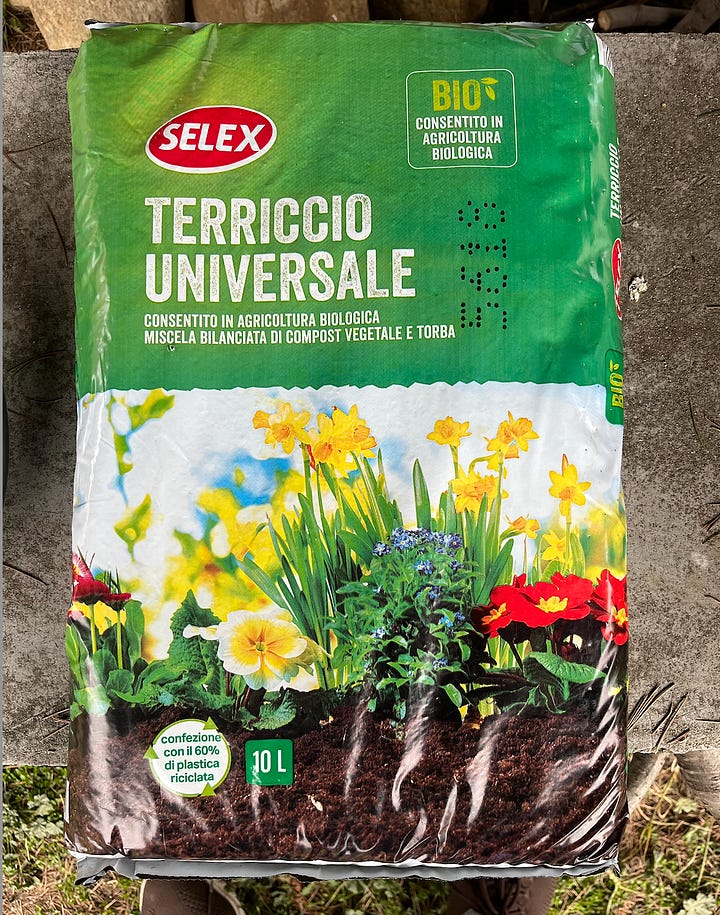Growing up in the country/woods in northern Minnesota, we always had a garden. (I will admit here it was more like a chore to me than anything.) We would order seeds online, till the soil, pick out the rocks (sooooo many rocks), plant the seeds, pick the weeds (soooo many weeds), and eventually enjoy the bounty: beets (called beetroot here in Italy) that were only ever pickled, cucumbers (also pickled), sweet corn, salad fixings that included lettuce (which strangely at the time came in the form of leaves rather than heads) and tomatoes, and occasionally something like peppers or eggplant or other interesting things that really needed a longer growing season to succeed.
As an adult, I’ve had small patches for a raised bed, or a balcony for some potted tomatoes, and in recent years in St. Louis an in-ground garden less than 1/10th of what I grew up with, but plenty. All of them were more about buying set plants at the farmers market than putting seeds directly in the ground. And less about picking rocks and weeds, because, well, we get busy, right? Many weeds thus thrived vigorously.
Here in Italy I have no plot of land for any type of garden, but I relish the idea about having a small one. Oh, to have a kitchen garden with fresh green spices to pinch off as a sauce simmers on the stove! So, maybe some potted plants in windows and on the balcony.
This should be easy, I thought, surely foreshadowing multiple challenges ahead.
I started with some dirt from the garden at UNISG, with full and encouraging permission from the garden manager. This is healthy old soil, with lots of the microflora and microfauna that comes from years of tending and growing, which is critical to success. I also stocked up on some plastic pots, rocks for drainage, and nut shells for mulch.


I supplemented the old soil with “new” organic soil from the market, where I also bought herb seeds. Nothing special to see here, unfortunately. I blended equal parts garden and purchased soil, packed up and planted the set-pots, and gave them some water.
Of course — I’m sure you’re thinking — this presents an excellent opportunity to test how the two different soils work. In our Sustainability, Food Production, and Industry course we talked about the value of good soil, and the importance of maintaining its health in more ways than just dumping fertilizer on it. (You will read much more about this in future posts.) So, in addition to the mix, I planted extra basil — because one can never have too much basil, right? — in pots of 100% UNISG garden soil and 100% organic store-bought soil.
We eventually need to write another paper on our Food Sustainability module, where we’ve started to learn the importance of the aforementioned microbes in the soil. (Thank you, by the way, for all the kind and encouraging comments on my first paper!) It may be that this project might find its way into that.
On the left is the garden soil, the middle is the mix, and the right is the market soil. The garden soil was much drier to start, and thus a lighter color, but even after watering the market soil remained the darker of the two. The market soil is a combination of compost and peat, so it really does have a lot going for it.
And let’s all agree that this experiment is highly unscientific: I didn’t wash and sterilize scoops and spoons, I cannot control precisely the temperature and sunlight that each pot gets, and whatever else might happen. We all just do our best, right?
So we shall see.
###







Good luck and have fun! And no, you can never have too much basil, I always plant two!